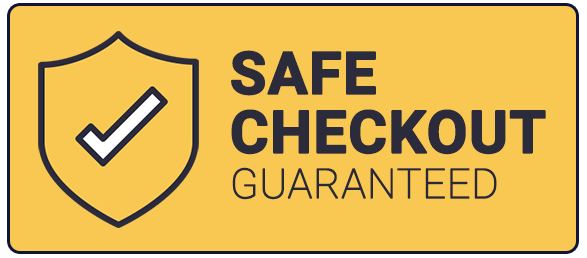|
COVID-19 OR THE "CORONAVIRUS AND PPE With the spread of “coronavirus” or COVID-19, a communicable viral disease; there has never been a better time to learn more about personal protective equipment (PPE). COVID-19 is passed from person to another through close contact and the sneezing or coughing of an infected person. Unfortunately, an individuals can also contract COVID-19 simply by touching a surface recently touched by an infected individual and then touching one’s own mouth, eyes, or nose. Transmitting and contracting COVID-19 can be greatly reduced by wearing personal protective equipment, which creates a barrier between the hands, the mouth, and other high-risk areas. Learn more about the different types of PPE and when to use in this valuable resource. WHEN SHOULD I USE PERSONAL PROTECTIVE EQUIPMENT (PPE)? So people often wonder when they should use personal protective equipment? Personal protective equipment may include gowns, goggles and face shields, gloves, and masks and respirators. This answer is really dependent on the personal or professional surrounding. Masks and respirators are used to cover the mouth and nose: high-risk areas for both contracting and transmitting sickness. Although the CDC recommendation is for voluntary use, an employer might feel it is critical to ensure certain employees do wear masks. If employees are considered “medium risk” for COVID-19 exposure because, for example, they have frequent contact with individuals within six feet, then using a mask may be required. Respirators cover as minimum the nose and mouth of users and remove contaminants from the air by filtering airborne particles or chemical agents from air. Goggles and face shields are designed to shield the eyes and the skin of the face, goggles and face shields are both extra protective layers designed to be worn in densely-populated areas with several contagious individuals. Disposable gloves are worn to protect the skin of the hands from pathogens and other harmful substances. However, even with COVID-19 in most countries and cities around the world, it’s not necessary to wear personal protective equipment at all times. If you are quarantining or practicing shelter in place, there is no need to wear protective equipment in your own home — provided you don’t live with anyone who has COVID-19. In most cases, it is only necessary to wear PPE when you are living or working in an enclosed space with COVID-19 patients. One notable additional case: if you are traveling and you have an existing respiratory condition, it is highly recommended that you wear a mask or respirator to prevent infection. Lastly, always remember to wash your hands with soap and water before putting on your PPE and after removing in order to prevent the cross-contamination of unwanted pathogens. To wash your hands properly, per the CDC guidelines, start by wetting both hands under warm water. Next, turn off the tap and apply soap. Lather all surfaces of your hands, including finger tips, creases between fingers, and the backs of your palms. Scrub for at least 20 seconds before turning the tap back on. LEARN MORE AND ENROLL IN LIFE-SAVING COURSES HERE AT HELP-A-HEART CPR Have more questions on how to put on personal protective equipment? Need extra guidance on how to remove personal protective equipment? Our team at Help-A-Heart CPR is here to help. Enroll in one of our many life-saving certification courses today! Contact us to get started at 210-380-5344.
Comments
|
AuthorDr. Tracy A. Jones is the CEO of Help-A-Heart CPR, LLC and an American Heart Association, ASHI, and American Red Cross Master Program Trainer, Instructor, & AHA Faculty Member located in San Antonio, Texas. Archives
June 2024
Categories |
Help-A-Heart CPR, LLC | 1747 Citadell Plaza Suite 101 | San Antonio, Texas 78209 | (210) 380-5344 | [email protected]
Copyright © Help-A-Heart CPR, LLC 2024
100% Certification Acceptance
We promise your employer, school, or agency will accept the certification card we issue to you. If there is a question of acceptance or validity, simply send us an email at [email protected] with full details. We will reach out to the individual/entity and provide accreditation information. If still there’s a question, we will provide you with a full refund of your class fee. It’s that simple.
We promise your employer, school, or agency will accept the certification card we issue to you. If there is a question of acceptance or validity, simply send us an email at [email protected] with full details. We will reach out to the individual/entity and provide accreditation information. If still there’s a question, we will provide you with a full refund of your class fee. It’s that simple.
|
Communities Served
ALABAMA: Birmingham
ARKANSAS: Fayetteville, Hot Springs, Jonesboro, Little Rock NEW MEXICO: Albuquerque TENNESSEE: Knoxville TEXAS: Amarillo, Arlington, Austin, Bandera, Bastrop, Boerne, Brownsville, Comfort, Converse, Corpus Christi, Dallas/Ft. Worth, Del Rio, Dripping Springs, El Paso, Floresville, Fredericksburg, Georgetown, Harlingen, Houston, Junction, Katy, Kerrville, Kingsville, Kingwood, Laredo, Lubbock, Lufkin, McAllen, Midland, New Braunfels, Odessa, Pleasanton, Round Rock, San Angelo, San Marcos, Schertz, Seguin, Taylor, Temple, Texarkana, Tyler, Universal City, Victoria, Waco, The Woodlands |
Why Choose Help-A-Heart CPR?
1. Flexible Scheduling
2. On and Off Location Training Available 3. Casual, Fun Atmosphere 4. Best Price Guarantee 5. All Instructors are AHA and/or ARC certified 6. 5 Star Google Reviews 7. Blended Learning (Online & Skills Check) Available 8. Meets OSHA & College CPR Requirements 9. Get Certified Within 3-4 Hours 10.Certification Is Good For Two Years 11. Official AHA/ARC/ASHI Training Site 12. High Quality Safety Training! |








